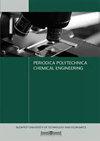生物沼气改造技术现状
IF 1.8
4区 工程技术
Q3 ENGINEERING, CHEMICAL
引用次数: 4
摘要
为了限制全球变暖,未来几年可再生能源在能源结构中的比例必须大幅提高。虽然诸如风能和太阳能的应用通常会在电网中产生波动,但厌氧过程中产生的沼气是一种易于储存的可再生能源。生沼气一般含有~ 55-70%的甲烷和~ 30-45%的二氧化碳。生沼气虽然可以直接用于燃烧或热电联产,但通过技术升级,可以将生沼气的甲烷含量提高到>95%,实现可再生利用。通过升级和清洗,升级后的沼气的质量可以达到天然气的质量,可以注入燃气网或作为天然气优化装置的燃料。市场上有几种物理化学升级方法(如高压水洗涤、变压吸附、膜技术等)来去除沼气中的二氧化碳含量。与以去除二氧化碳为主要目标的物理化学方法相反,生物沼气升级技术是利用微生物将沼气中的二氧化碳转化为甲烷(化学自养升级)或藻类生物质(光自养升级)。在与二氧化碳捕获相关的能源储存领域,人们对生物沼气升级技术的期望很高。本文综述了生物沼气升级技术的最新研究成果,讨论了生物沼气升级技术的可行性和竞争力,并展望了生物沼气升级技术未来的重要发展方向。本文章由计算机程序翻译,如有差异,请以英文原文为准。
Current Status of Biological Biogas Upgrading Technologies
To limit global warming, ratio of renewable sources in the energy mix has to be considerably raised in the following years. While application of e.g. wind and solar power usually generates fluctuations in the electric grid, biogas produced in anaerobic processes is an easy-to-store renewable energy source. Raw biogas contains generally ~55–70% methane and ~30–45% carbon-dioxide. Although raw biogas can be utilized directly for combustion or combined heat and power generation (CHP), its methane content can be raised to >95% by upgrading technologies, thus it can be valorized. By upgrading and cleaning, the quality of the upgraded biogas may reach the quality of the natural gas and it may be injected to the gas grid or used as fuel for devices optimized for natural gas. Several physico-chemical upgrading methods are available on the market (e.g. high pressure water scrubbing, pressure swing adsorption, membrane technology, etc.) to remove the carbon-dioxide content of the biogas. Opposite to the physico-chemical methods, where basically the CO2 removal is the main goal, in biological biogas upgrading technologies microorganisms are applied to convert the carbon-dioxide content of the biogas to methane (chemoautotrophic upgrading), or algal biomass (photoautotrophic upgrading). The expectations are high towards biological biogas upgrading technologies in the field of energy storage linked with carbon-dioxide capture. In this paper, latest research results concerning biological biogas upgrading are summarized, viability and competitiveness of this technology is discussed together with the most important future development directions.
求助全文
通过发布文献求助,成功后即可免费获取论文全文。
去求助
来源期刊

Periodica Polytechnica Chemical Engineering
ENGINEERING, CHEMICAL-
CiteScore
3.10
自引率
7.70%
发文量
44
审稿时长
>12 weeks
期刊介绍:
The main scope of the journal is to publish original research articles in the wide field of chemical engineering including environmental and bioengineering.
 求助内容:
求助内容: 应助结果提醒方式:
应助结果提醒方式:


